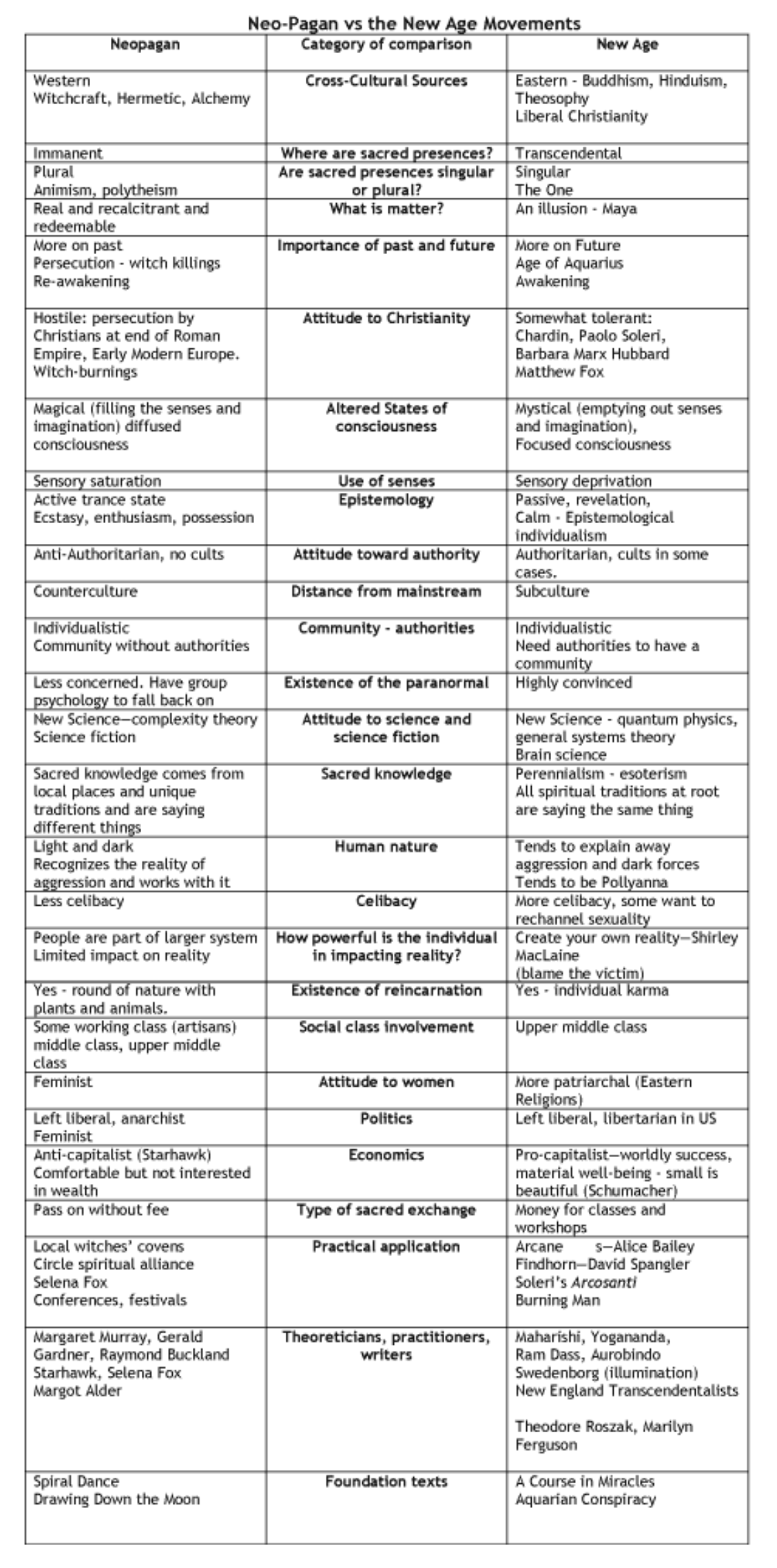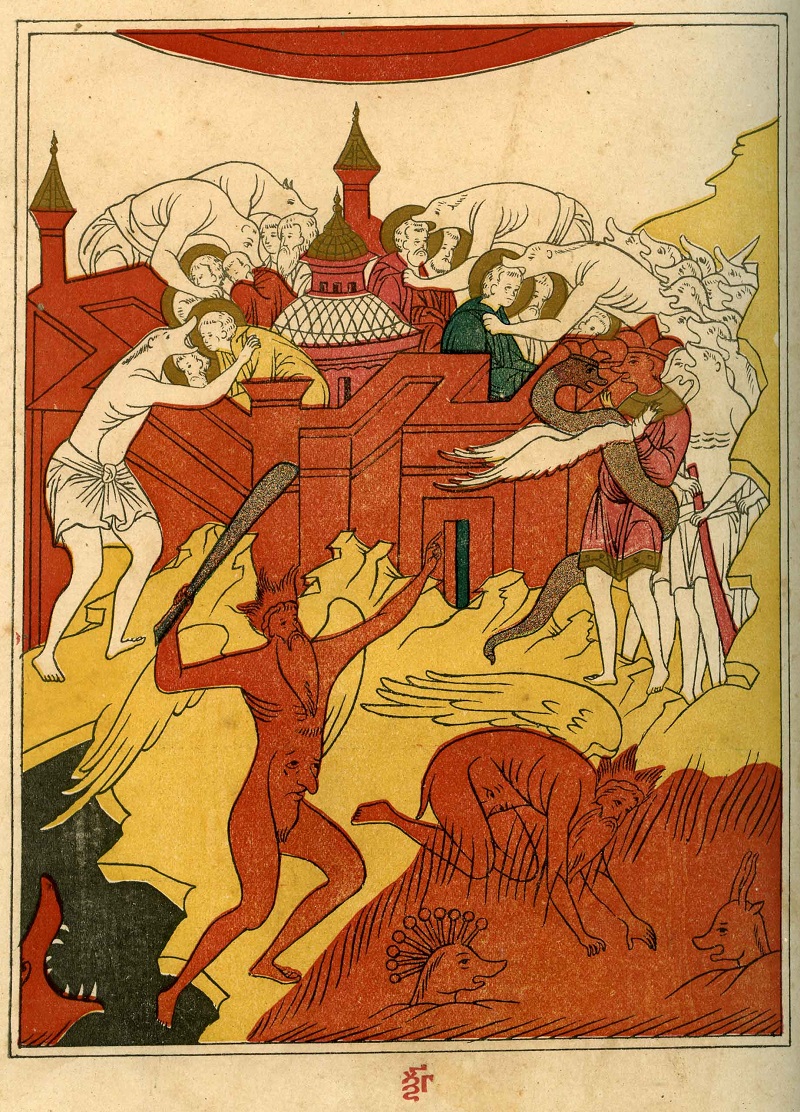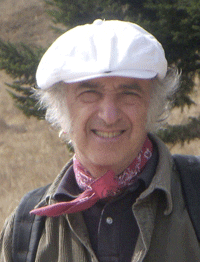ORIENTATION
Beginning in the late 1970s, Yankeedom became increasingly conservative as the standard of living declined. The white working-class flocked to the more conservative fundamentalist churches where they were told to vote for a conservative in the 1980 elections. But what happened to the middle and upper middle-classes? They also experienced an economic decline. For some, their strategy was to reject organized religion, and build two alternative spiritualities: the New Age on the one hand, and Neo-Paganism on the other. This article compares and contrasts them to each to each other.
I begin the article with the economic conditions of Yankeedom between 1948 to about 1978. I then provide working definitions of each movement, when they started and who their major contributors were. I then compare and contrast the New Age and Neopaganism in depth. I begin with what they have in common, but I spend most of the article contrasting their differences across 27 categories including the importance of the past and future; attitude towards Christianity; the methods of achieving altered states of consciousness; importance of the paranormal and attitude and stance towards authority. As a materialist, my concern is also with New Age and Neopaganism’ place on the political spectrum and their attitudes towards capitalism. Lastly, I examine their class composition and their stance on feminism. I close Part I of this article by asking questions about how relevant both movements might be to 21st century socialism. In Part II of this article, I answer the questions I’ve raised.
My sources for this article are The Emerging Network: A Sociology of the New Age and Neo-Pagan Movements by Michael York, The New Age Movement by Paul Heelas, Drawing Down the Moon by Margot Adler, and The Aquarian Conspiracyby Marilyn Ferguson. I will also draw on my personal experience, having lived in and around both of these movements in the San Francisco Bay Area (jokingly referred to as the Neopagan capital of the world) between the ages of 30-50 during 1970- 1990. I also witnessed the start of the Burning Man phenomenon, which some say is the essence of the New Age.
Yankeedom Economic Roller Coasters 1950-1990
Marxian economists agree that between the end of World War II and about 1971 were the golden years of capitalism, at least in Yankeedom. Germany and Japan were decimated by World War II and offered no competition to Yankee capitalists. The white working-class never had it better. Unions were stronger than ever (about one worker in three was in a union). The GI bill allowed these workers to buy cheap homes in the newly built suburbs and go to college tuition-free if they wanted. The Yankee rulers were so wealthy that they were taxed up to 90% of their earnings and they still made great profits. A working-class family lived comfortably on one income and the job, on average, was 40 hours a week. Under these abundant conditions, it is no accident that there were no New Age or Neopagan movements because movements are more likely to emerge when economic, political or ecological conditions are difficult.
Economically, things began heading south in the early 1970s. Germany and Japan had recovered from the war and were beginning to compete with Yankee capitalists. One response from the Yankee rulers, rather than competing directly with these two nations, was to rip off more surplus value from workers. Yankee capitalists uprooted manufacturing jobs and set up factories in what were then called “Third World” countries where land and labor were cheaper. These were called “runaway shops”. This meant the end of well-paying manufacturing jobs for workers. Unions were not strong enough to stop this. No retraining was provided by the state, as workers had to scramble to find semi-skilled or unskilled jobs. The second way Yankee capitalists squeezed surplus value out of workers was to increase the number of hours workers labored during the week and the number of hours worked each day. By the 1980s, the average work week had risen from 40 to 50 hours per week and working-class and middle-class households required two incomes. Workers struggled with insecure jobs and the unions were unable to protect workers’ healthcare benefits. Workers began to lose confidence in unions and union membership declined.
A third major decision the ruling-class made was to invest their money in financial capital rather than industrial capital. In 1971 the rulers decided to go off the gold standard as the reserve currency and the dollar had no gold backing. Capital could be exchanged by bankers without needing gold to back it up. In addition, the United States had lost in Vietnam and the oil embargo by the OPEC countries sent a shiver down the spines of the Rockefellers. The Rockefeller sponsored Club of Rome project told the Yankee population that population pressure was a real problem and people needed to live on less. Yankeedom was in economic decline. By the late 1970s Jimmy Carter was telling its population that we needed to learn to do with less.
All this is not the kind of news the Yankee population expected to hear. Increasingly, politicians were distrusted while the mainstream religions were seen by both middle-class and upper middle-class sectors of the population as part of the problem. It is in these declining conditions that the Neopagan and the New Age movements should be understood. Both alternatives were optimist spiritual reactions to a depressed state of the political economy and mainstream religion.
What Does the New Age and Neopaganism Have in Common?
Before we define the New Age and Neopaganism, let’s begin by what they have in common. Though the seeds of these movements are difficult to pin down, the time of their clear presence was remarkably similar. Neopaganism “arrived” in 1979 with the simultaneous publishing of two books: Starhawk’s The Spiral Dance and Margot Alder’s book Drawing Down the Moon. For the New Age, the founding text, the Aquarian Conspiracy by Marilyn Ferguson was published in 1980.
Both movements were strongly motivated by a rejection of mainstream Judeo-Christian religion. Both movements believed in the power of personal experience, whether magical or mystical, as opposed to trusting religious authorities, whether they be priests or rabbis. Each believed that every individual had a “higher self” that superseded the ego. The experience of novices of both Neopagan and New Age movements when they first find out about the movements is mostly described as a “homecoming”. There are no reports of conversion. Both agree that evil not an objective force (as in the form of a devil). Rather, each think that evil has either a psychological or social origin. Neither intends to grow bigger, as there are no Neopagan or New Age missionaries. Each is life-affirming and optimistic rather than life-denying and pessimistic.
Each movement was decentralized, consisted of word-of-mouth, grapevines and networking. Neither movement has a national central organization. Neopagans are militantly against centralization and Wiccan covens closely resemble anarchist organizations. New Agers’ interests span a larger number of disciplines and the whole movement is more of an eclectic mishmash with no center. Partly for these reasons, the precise number of people in each movement is hard to pin down. Both movements are located in the United States and, to a lesser extent in England. Both are critical of depicting change in a gradual, linear and inevitable way. Each sees change as happening in cycles, and when something new emerges it is the product of non-linear dynamics.
Summarizing the Commonalities:
- Point of origin: late 1970s
- Place: United States, England
- Economic conditions: decline of industrial to finance capital
- Religion: Rejection of Judeo-Christianity
- Authority: Distrust of religious, political and scientific authorities: value of personal experience
- Type of self: higher self (Jung) atman self (Hinduism)
- Outlook: optimistic
- No need for conversion or proselytizing
- No devils (evil is psychological or social)
- Organization: decentralized
- The shape of time: Both see the limits of linear time. Each sees change as happening in cycles, spirals and in non-linear ways.
Defining the New Age
Why Aquarian?
Many consider the book The Aquarian Conspiracy to be the “bible” of the New Age Movement. The title of the book locates the New Age within an astrological framework. Supposedly, we are coming out of the darker side of Age of Pisces, the age of spiritual decline, into the Age of Aquarius. Astrologically the Aquarian Age means the age of experimentation, innovation, light, healing and love. In what areas do we see these characteristics operating?
Ferguson tells us the spirit is operating in many fields: brain science and consciousness studies; the new science of general systems theory and physics; medical health with alternative medicine; in education and spirituality. The problem here is that by calling this movement, “Aquarian” or even “New Age”, gathers people in these fields under an astrological umbrella. Some of schools of thought listed such as the complexity theory of Prigogine, the General Systems theory of von Bertalanffy or the philosopher of science, Thomas Kuhn would hardly be happy with astrological associations. Neither would Ferguson’s heroes L. L. Whyte, Jan Smuts (Holism and Evolution), Alfred North Whitehead or Gregory Bateson. Let’s accept this unfortunate start and let’s say she is on to something regardless of its astrological associations.
Who are its heroes and heroines?
Besides those mentioned above, who are the rest of Ferguson’s New Age heroes? In history we have Toynbee, De Tocqueville, and William Irving Thompson. In education, A.S Neill and Ivan Illich; in the globalization of society there is Marshall McLuhan, Teilhard de Chardin, Willis Harman, and H.G. Wells. In brain science there is Karl Pribram, in physics Fritjof Capra (The Tao of Physics) and David Bohm. Mystics of many ages are claimed as predecessors – Meister Eckhart, Jacob Bohme, Pico and William Blake, and closer to the present, the New England transcendentalists William James (Varieties of Religious Experience) and Bucke (Cosmic Consciousness). There are two humanistic astrologers who were especially important to the New Age: Dane Rudyhar and Marc Edmund Jones. Mythologists like Joseph Campbell and psycho-mythologists like Jung were enormously popular.
Very important to the New Age was the work of Ken Wilbur and Jeanne Houston. Wilbur’s first book The Spectrum of Consciousness created a continuum link between psychology and spirituality. From there he went on to write spiritual books on social evolution (Up From Eden) and developmental psychology (Atman Project). Jean Houston also straddled the line between psychology and spirituality with what she coined “Sacred Psychology”. She wrote books which showed how Greek mythology could be used for psychological growth. Her book Life Force described the history of the West based on five stages of self-development. These stages were based on the work of Gerald Heard. In the field secular psychology, the humanistic psychologists Maslow and Rogers, Rollo May and Erich Fromm were part of the human potential movement, not the New Age. But some of these humanistic psychologists were also interested in LSD and were influenced by Aldous Huxley and later by Stanislav Grof along with the popular shamanism of Carlos Castaneda.
Down with mechanistic, reductionist science!
The New Age is not just rebelling against organized religion. It is also reacting to conventional science with its overspecialization. This overspecialization keeps traditional science from seeing the big picture and having an interdisciplinary perspective. New Agers complain about mainstream’s sciences tendency to reduce all complexity in nature to physics. It also rejects dualism involving separation of mind from matter and mind from body. It believes modern science is slow, plodding and preoccupied with gradually building things up. What this misses is that nature is full of surprises and qualitative leaps whether in scientific knowledge (Kuhn), physics (Bohm), the nature of subatomic participles (Capra), or biology (Gould’s punctuated equilibrium). Change often does not happen in a linear way but in a non-linear manner as described by Prigogine. Lastly, conventional science sees nature as mechanistic and driven by external forces, rather than organic and self-regulating (Von Bertalanffy, general systems theory.)
Sharpening the boundaries of the New Age
One problem with the New Age is its fuzzy, overly inclusive boundaries. For example, its inclusion of the human potential movement within it. When we look at the practice of the human potential movement, the psychological boundaries of individuals were pushed much more aggressively than most of the practitioners of the New Age would be comfortable (with the exception of “Guru” groups like EST of Rajneesh). Secondly, the use of hallucinogenics in the early 70s had no official approval and the psychologists were treating those who came to Esalen as human experiments. Fritz Perls and Will Schutz got into raging fights. Perls slept with many of the participants at Esalen and took enjoyment in reducing them to tears. Many of the group therapy sessions were done in the nude with no structure, explanations or reasons. Group marathons were held all weekend, “opening people up”, without offering any follow-up support. This method is hardly about bringing love and light to people that New Agers advocate.
The Human Potential Movement was primarily psychological with spirituality on the periphery. Yes, I remember books by Alan Watts and Dameon on the coffee table of hippie friends in Berkeley in 1970, but they were more the exception than the rule. The New Age was primarily spiritual with psychology on the periphery. Lastly, the New Age was much more supportive of petit bourgeois capitalism, whether it be small shops or decentralized economies (Small is Beautiful). The Human Potential movement was generally silent about capitalism.
Defining Neopaganism
“Monotheism is but imperialism in religion” – James Breasted
It is also significant that one group that Marilyn Ferguson never mentions as exemplars of New Age were Neopagans. The reasons for this will be clearer later on in this article, but for now it is just worth mentioning.
Roots of Neopaganism
Neopagnism clearly came of age in the late 1970s and has grown since then. But how far back does it go? In terms of the Wicca tradition, there was the work of Gerald Gardner in the 1940s. However, in terms of ceremonial magick, Neopaganism goes back to the 19th century with the Golden Dawn. But ceremonial magic has a long history itself going further back to the Renaissance magick of Ficino, Bruno and Paracelsus. The term “Neopagan” really refers to pagan practices since Gerald Gardiner reconstructed wiccan ritual practices.
Types of Neopagans
Like the New Age, Neopagans exist on a spectrum.
- Gardnerian Wicca which originated in England and was the first reconstructed wicca which drew from Margaret Murray and Robert Graves
- Alexandrian Wicca which also originated in England and more than other wiccas, has hierarchical grades and tests that must be passed to advance
- Dianic Wicca focuses on a single goddess and consists of virtually all women covens. They also draw from Margaret Murray. Z Budapest is a famous example.
- Faery Wicca specifically working with nature spirits. Gay men have been influential. Starhawk’s group Reclaiming is part of this.
- Ethnic/historical Neopagans aim to revive pre-Christian practices of the Greeks, Romans, Druids, Celtic and Norse traditions.
- Voudon – these practices developed in Africa and Haiti, combining magic with Catholicism. It used to be called Voo-doo.
- Ceremonial magic which draws from the Golden Dawn and the work of Aleister Crowley. Ceremonial magicians tend to synthesize systems such as The Tree of Life, the Tarot and Astrology.
- Neopagans who emphasize the future based on science fiction writers. The Church of All Worlds is an example of this.
- Jungian archetypal psychology. While Jungians are not themselves a type of Neopaganism, there are Jungian interpretations of what wiccans and ceremonial magicians are up to. Besides Jung, James Hillman’s polytheistic psychology and the work of David Miller have done a great deal to make paganism respectable in the eyes of psychologists. Margot Adler has brought a Jungian perspective to the history of Neopaganism. Vivianne Crowley has done the same in England. Robert Bly has added a mythopoetic slant to involving more men in “men’s mystery traditions”.
Who does Neopaganism exclude? Excluded are most Eastern mystical groups with an authoritarian structure, Christianity and Satanism, which most Neopagans consider reversed Christianity.
Characteristics of Neopagans
Though there are significant differences between Neopagan groups, they do share the following characteristics:
- The sacred sources are plural. There is a belief in animism, polytheism or pantheism. There is one exception to this and that is some feminist wiccans insist on revering a single monotheistic Goddess. Recently there has developed paganism without gods and goddesses. Mark Green has developed something called “atheopaganism” and John Halstead has cultivated something he calls “humanistic paganism.”
- The sacred sources are immanent, not transcendent. This means that the material world is self-regulating and does not require intervention. Nature is all we need.
- Like the material world, the human body is not in a fallen state. The senses and sexuality are celebrated, not depreciated.
- The method of altering states of consciousness is through a collective ritual in which the imagination and senses are saturated through the arts, using music song, dance, incense, and mask-making. This is called the art and science of magick.
- Neopagans are generally anti-authoritarian and do not accept revealed sacred knowledge. Magical practices are experiential.
- There is a practice which is connected with the celebration of eight pagan holidays throughout the year. Rituals are also done for special occasions like coming of age, marriages and death.
Who are Neopagan Heroes and Heroines?
Besides Gerald Gardner, some of recent figures associated with Neopaganism are Margaret Murray, Robert Graves, James Frazer. Theoreticians are Isaac Bonewits, Aidan Kelly and Starhawk. Other notables include Z Budapest, Morgan McFarland, Selena Fox, Tim and Morning Glory Zell-Ravenheart and Gwydion Pendderewen.
Comparing the New Age to Neopaganism
I will now systematically compare New Agers to Neopagans across 27 categories. Please peruse the table to get a handle on where we are going.
 Time, place and ontology
Time, place and ontology
The first major difference has to do with ontology. New Agers draw mostly from Eastern traditions: Buddhism, Hinduism and the Theosophy of Blavatsky and Alice Bailey. Neopagans draw from the Western tradition of witchcraft, hermeticism and alchemy. Closely connected to this are the differences in the attitude towards matter.
New Agers follow Eastern traditions that say that matter is an illusion at worst, derivative of spirit at best. Neopagans treat matter as real, recalcitrant and to be struggled with. Western alchemists saw that their work was to “redeem matter” by changing sulphur, salt and mercury into gold. For New Agers the universe is one and transcendental to the material world. As I said earlier, with the exception of some female wiccan goddess worshipers, all Neopagans speak of nature as plural. They are either polytheists or animists and they believe these powers are immanent. Nature is self-creating and self-regulating. Lastly, New Agers follow Huxley’s perennialism which says that all the world religion have esoteric core claims which are the same around the world. The differences between religions are exoteric, superficial, superstitious, and decadent. For Neopagans, sacred knowledge comes from local places which are unique to it and cannot be joined with others without the tradition being watered down or lost.
New Agers do not spend much time analyzing the past. They believe that ancient societies were wiser and contained spiritual wisdom that was lost with the Age of Pisces. What matters is that we are living in the present and the long-distant future in the Age of Aquarius. The New Agers have no axe to grind with the past. This is not so with Neopagans, as we shall see next.
Attitudes towards Christianity
Neopagans are very aware of what Christians did to pagans at the end of the Roman Empire. The brutal killing of Hypatia and the burning of the Alexandrian library is just the tip of the iceberg. In the Renaissance, pagans had to hide their magical practices. The centralized state, along with the Protestants and Catholics, persecuted the witches in Early Modern Europe. Pagans for the most part are anti-Christians, and even today have to worry about being persecuted. Many Neopagans neither forgive nor forget.
New Agers are much more likely to be eclectic and incorporate Christianity. For example, in response to Marilyn Ferguson’s questionnaire, the Christian paleontologist Teilhard de Chardin was named as their greatest inspiration. Barbara Marx Hubbard’s book Conscious Evolution is modelled on Chardin’s work. Paolo Soleri’s building of “Asrcosanti” in central Arizona has been inspired by Chardin. Furthermore, New Agers have welcomed Dominican Catholic priest Matthew Fox into the fold. Fox’s Creation Spirituality even made room for wiccan Starhawk on his teaching staff.
Attitudes to authority, community, subculture and countercultures
The wiccan tradition was visited by a passing comet, during the radical wing of the women’s liberation movement in the late 1960s and early 1970s. Some women were not satisfied with promises of the patriarchal churches to reform and they searched for a women’s spirituality beyond all organized religion. They found it in wicca. These women carried the same leveling tendency into wicca that they carried with them into the New Left. They met little resistance from wiccan covens that were already established. Neopagan communities generally consist of many people who are self-educated and are hostile to most authorities. The culture that they create is a strong counterculture which consists of covens, bookstores, coffeehouses in cities, and self-sustaining farms in rural areas. These are countercultures which are in conscious opposition to the dominant culture. While pagans can be very individualist, most of their practice is community-based.
New Agers have had less of a history of persecution and are far less afraid of being harassed by mainstream religious authorities. They are more respectful of authorities (especially Eastern teachers) and are much more likely to be victims of cults. There is a New Age culture that can be seen at talks, conferences or festivals, but it is not built out of necessity and it is much more loosely formed. New Agers are more at home with structured authorities and do not have communities which gather together to create a New Age experience. As we shall see, most New Agers come out of professional settings, are more individualistic and less experienced in creating a community independent of the authorities.
Drug-induced mystical vs magical states of consciousness
Hallucinogens have been important in New Age Culture, going all the way back to Huxley’s use of mescaline. Psychologist Stanislav Grof has studied and advocated for LSD and Terence McKenna has argued for the power of hallucinogenics in tribal societies. Setting aside the issue of drugs, an altered state of consciousness can be achieved in two ways. One is through sensory deprivation, which can create a mystical experience. The other, sensory saturation, creates a magical state of consciousness. For New Agers, since their major influences have been Eastern, various forms of meditation have been the road to a spiritual state of mind. While Neopagans may use meditation as an initial starting point to ground themselves at the beginning of a ritual, the ritual itself is not meditative. The use of drumming, singing, dancing, colorful costumes, incense, and food saturate the senses to create enthusiasm or ecstasy. This is an active, trance state in which the participate “travels” or in some cases is possessed. Mystical states create calm, passive revelation. Magical states create controlled pandemonium – where all the gods speak.
Paranormal, archetypes and supernaturalism
Marilyn Ferguson’s questionnaire for New Agers indicated that there was very high belief in ESP, clairvoyance and telepathy (85%- 94%). Margot Alder gave no corresponding results for Neopagans, but it is safe to say a large number of Neopagans also believe in paranormal phenomenon. However, there are two important differences. There are more Neopagans who not only are interested in the new sciences, but are more skeptical and willing to criticize them from a knowledge of scientific methodology. New Agers, in my experience, are more likely to commit to the confirmation bias and not look for evidence that contradicts what they already believe.
The second important difference about belief in the paranormal is that Neopagans have seasonal rituals in which they have positive group experience on a repeated basis. They are aware that the social group has the power to alter their state of consciousness. They have less need to believe in paranormal experiences in order feel connected. In addition, many Neopagans do not even believe in the independent existance of goddesses or gods. Some think they are Jungian archetypes which are the product of humanity, not a spiritual world.
Human nature and individual power
Since New Agers tend to see matter as an illusion, it seems hardly far-fetched to think they see dark and negative forces as products of short-sightedness, ignorance or egotism, but in no sense real. This has led to them being called pollyannish, seeing the world through rose colored glasses. The spiritual power that comes with enlightenment is so powerful that it is thought that individuals create their own reality (as Shirley MacLaine has argued).
Just as Neopagans see matter as real and recalcitrant, they also understand forces that are considered dark as real and which are much deeper than short-sightedness or egotism. Neopagans might draw on evolutionary psychology, specifically sexual selection to explain conflicts between males and females. So too, they might explain conflicts as evolutionary mismatches between the conditions under which we formed our human nature (hunter-gatherers) and our contemporary industrial capitalist societies, which are far from those conditions. What follows is that for Neopagans neither individuals or groups “create their own reality”. We are limited in what we can achieve as both the biophysical world and the socio-historical worlds are larger systems and cannot be pacified or reduced to background.
Politics and Economics
In her book The Aquarian Conspiracy, Marilyn Ferguson claims that politically New Agers constitute a “radical center”, a combination of Republicans and Democrats. But there is no New Age consensus about this. There really are no conservative New Agers. There seem to be a combination of New Deal liberals or they are libertarians. Neopagans are much broader politically. There is a strong anarchist presence in the work of Starhawk and Reclaiming, and Reclaiming groups have spread from the SanFrancisco Bay Area to other parts of the contrary. In addition, Neopagans seem to be New Deal liberals, but there are also two more right-wing elements. The Heathen Nordic tradition in the United States has more patriarchal elements and has been accused by other Neopagans as fascist. In Europe, some Neopagans who are part of the ceremonial Magick traditions such as the Golden Dawn are reactionaries or even monarchists (Dolores Ashcraft-Nowicki). Ceremonial Magick have orders with graded hierarchies. It makes sense that if their orders are hierarchical it is a reflection of their beliefs about human political systems.
The New Agers are not bashful about thinking there is nothing wrong with material success. (Heelas, New Age Movement 58-67). Neither do they seem to worry that the cost of their workshops and lectures might be beyond the financial reach of working-class or poor people. In the index of The Aquarian Conspiracy there is no entry about either capitalism or socialism. What this means to me is that economics is not thought of in a systematic way, as in calling it “capitalism”. Rather, it is seen as “the economy”. It seems to have never crossed their minds that they might be promoting a spiritual capitalism. Neopagans are very critical of the New Age leaders charging large sums of money for what spiritual knowledge they have to offer.
Traditionally in wicca, the “Craft” is passed down without charge. The important thing is that the aspiring student be serious, do the work, be consistent in attendance and pass on what has been learned in the same spirit in which it was given – for free.
Wiccans are the most likely of Neopagans to be anti-capitalist. Some, like Z Budapest envision a socialist matriarchy.
Gender and class
In Marilyn Ferguson’s questionnaire, she said that most of her sample were professionals (meaning upper middle-class) there is no representation of working-class people. In addition, to the extent that the New Age supports Eastern traditions such as Buddhism, Hinduism or Zen, they buy into an Eastern patriarchal framework.
The presence of cults that often comes out of these traditions and guarantees there will be extreme dominance by a leader which, in cults, is almost inevitably a male.
In her book Drawing Down the Moon, Margot Adler says that some of the first witches she meet in England were working-class. To the extent that wiccans own farms they work on, they are likely to be what Marx called petite bourgeois. Usually, rural pagans do all the work on the farm themselves, including blacksmithing, tanning, weaving and selling to a market. There are also middle-class and upper-middle class Neopagans. The number one profession for Neopagans on Adler’s survey were computer programmer, systems analyst or software developer. But third on her list is secretary or clerical, indicating membership in white collar working-class. There are middle-class and upper middle-class workers such as teachers or therapists but the percentage of upper middle-class is lower than for New Agers. Lastly, Neopagans are extremely supportive of feminism. Some Dianic witches don’t even allow men in their covens. The structure of wicca gives more weight to goddesses than gods and it has been an adjustment for male wiccans not to be centered in these rituals. Generally, wiccan men are very supportive and the presence of gay men in the rituals has helped feminism.
Practical Application
New Age communities can be seen in three applications. The first is Burning Manwhich began in 1986 has lasted into the present. This is a yearly creative gathering that began in San Francisco and then moved to Black Rock, Nevada. In my opinion this gathering draws young, upper-middle class people who are disappointed they missed the 1960s and want to make up for that period. In recent years it has been attended by wealthy people whom some complain have not respected the principle of self-reliance. It has gotten more and more expensive to attend. Some say the role-playing and self-expression are more signs of narcissism and capitalist decadence than model communities of the future.
Another New Age community project is one started by Italian city planner and follower of Teilhard de Chardin, Paolo Soleri . His project(started in 1970) is to build an urban environment which encourages intense social interaction in the absence of large-scale industry and built with ecologically sensitivity. It has been worked on for 40 years, with an ideal of housing 5,000 people. Findhorn Foundation, an intentional village community located in Scotland, has been developing since the 1980s. The community is based on the theosophical principles of Alice Bailey.
Neopagans are less interested in large scale intentional communities. In witchcraft, the basic unit is the coven. The coven usually consists of between 8 and 13 people who meet at a minimum of eight times a year to celebrate and ritualize the eight pagan holidays of the year. Some are more ambitious and meet to celebrate coming of age rituals, marriages or funerals of individual members. There has been a growth in recent years of Neopagan regional conferences and festivals.
Prospect: Is It Possible to Synthesize Socialism with the New Age and Neopaganism?
Towards the beginning of this Chapter, I identified commonalities between the New Age and Neopaganism. I will selectively use some commonalities to pose some questions. Both Neopagans and New Agers reject mainstream Judeo-Christianity. Would this help or hinder the development of socialism? Most socialist theoreticians claim to be atheists, so they would agree with rejecting Judeo-Christiantiy. However, they would not want to replace it with Eastern mysticism or gods and goddesses. But what about with possible recruits from the working-class, many of whom may be fundamentalists? Both Neopagans and New Agers reject religious, political and scientific authorities and trust their own experience. What would the working class think of this? The organization of both New Agers and Neopaganism is decentralized. Will that organization help or hurt the development of socialism?
We said the outlook of both movements is optimistic. Will this optimism help or hinder the building of socialism? Both Neopagans and New Agers claim that human beings have a higher identity than the ego. Each claim to have a “higher” self that is capable of tapping into a deeper reality. Will this new identity be welcomed or mocked by socialists? Unlike mainstream religions, neither New Agers nor Neopagans claim they are missionaries and say they are not in the business of conversion. Given that historically socialists have tried to convert the working class, this lack of missionary zeal will not set so well with socialist theoreticians. Neither Neopagans or New Agers personify or objectify evil. Given socialists’ claim that capitalism is the root of all social problems, do socialists personify capitalists as evil? If so, does this mean socialism loses its edge if it stops proselytizing? Both Neopagans and New Agers reject linear concepts of time, for cyclic and non-linear time frames. This would seem to go very well with the Marxian dialectical shape of history.
In Part II of this article, I will discuss how each taken separately can be useful or not useful to socialism. In this section, I will only use the categories of comparison in order to pose but not answer more questions. New Agers are drawn to Eastern traditions and Neopagans to the West. Should that matter to socialists, and if so, why? Should it matter to socialists whether Neopagans or New Agers understand nature as a single force or plurality of forces? Should it matter to socialists if nature is understood as both self-creating and self-sustaining or whether there is a force beyond nature? Is matter real and independent of consciousness or is matter an illusion and only consciousness is real? Why should this matter to socialists?
Both New Agers and Neopagans emphasize the importance of creating altered states of consciousness, with drugs or by sensory deprivation or sensory saturation techniques. Does this get in the way of building socialism or can it advance it? Neopagans are further away from mainstream culture than New Agers. Can this assist or hinder socialist attempts or organize and sustain socialist organizations. Many New Agers are convinced that paranormal psychology is real and that we must cultivate those skills. How will this be received by socialist theoreticians and socialist recruites from the working class?
Both movements reject reductionist science for the new, non-linear science in the fields of physics, and the brain. Will socialists jump on this bandwagon or dismiss this science as pseudo-science? How will socialists greet the New Age notion that people are good and only turn our badly because they are uneducated, ignorant, short-sighted. Will they agree with Neopagan characterizations of the New Age as Pollyanna.
Freedom is highly valued by both New Agers and Neopagans. But is there such a thing as going too far? How will it go over with working-class people when Shirley MacLaine tells each working-class individual that they “create their own reality”? Some New Agers claim to believe in reincarnation. Some say individuals are working out karma based on past lives. What will this do to socialist organizing. How might it help a working-class person to know they were a prince or a pauper in another life? The class composition of New Agers is primarily upper-middle class. How easy will it be for socialists to integrate them into a socialist organization. Many wiccans are organized into covens. Will that organization help or get in the way of building a socialist mass party? New Agers are more hierarchical than Neopagans and they are more likely to accept a spiritual leader, who is most of the time, a man. How will this be received by socialists?
Many women into feminist wicca are anarchists. How will this work with a socialist party organized along Leninist lines? Some New Agers are libertarian and commercial capitalists. Do these folks have any redeeming value for socialists? If a radical socialist union were taken on a tour or Findhorn, Soleri’s Arcosanti city, or an admission to a nine-day Burning Man, what would they think? What would it be like for the same group to be invited to one of the Spiral Dance rituals of Starhawk’s organization, Reclaiming? We will address and provide answers to these questions in Part II of this article.
























labryon